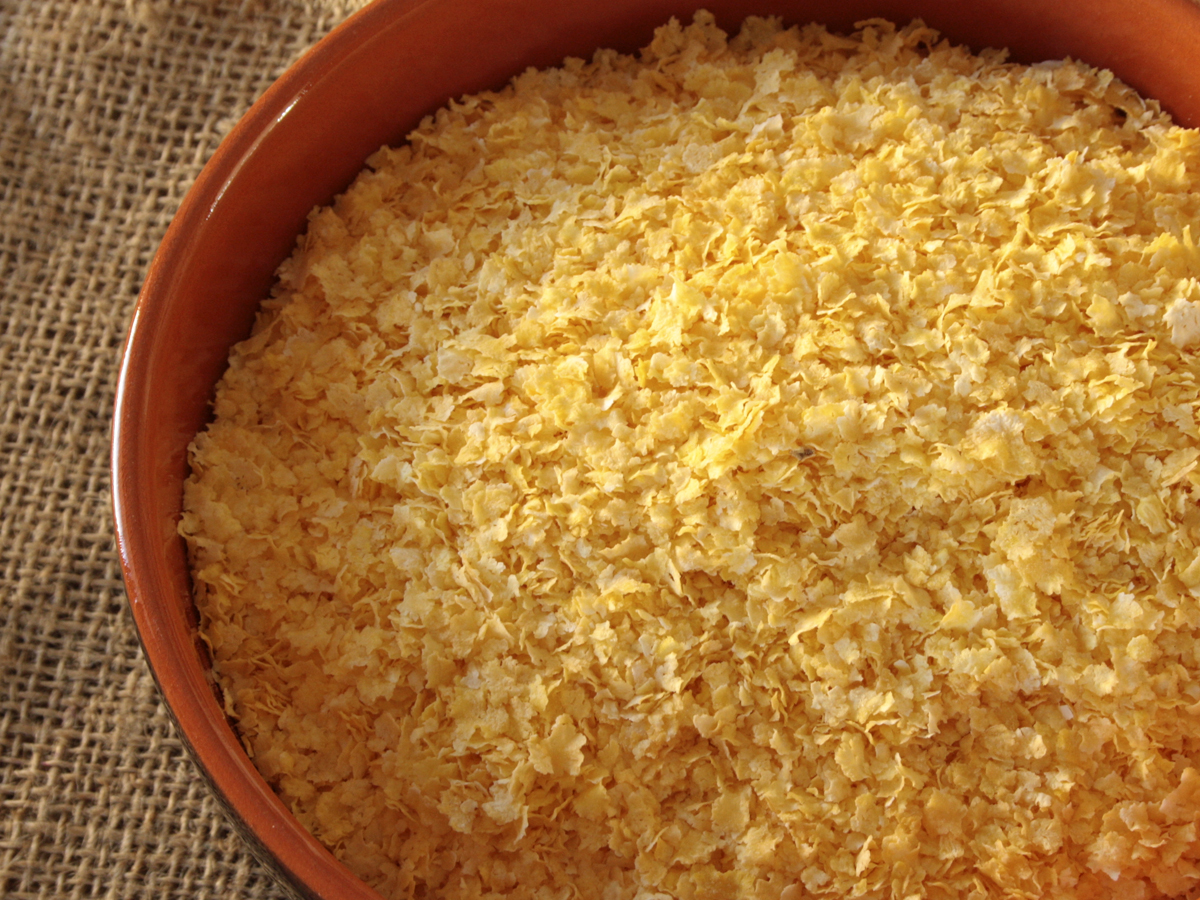A lot of good cooking is in technique. What’s something that you discovered or was told that really changed something meaningful for you? For me, I had struggled a lot to make omelettes. They always wound up becoming scrambled eggs because I sucked at flipping them over to cook on the other side (I like my eggs cooked pretty well so this was important to me.) Finally, watching someone else make an omelette, I noticed they didn’t flip it. They put a lid on the pan, turned the heat down, and let the top cook that way. I tried it myself and now I make almost perfect omelettes every time. Have you had anything like this happen to you? If so, what was it?
Mise en place makes things soooo easy. When I meal prep I chop up all my veg on Saturday and stick it in the fridge, then cook on Sunday. Makes the whole process less overwhelming than doing everything in one sitting.
Brine chicken, especially chicken breasts for a few hours or overnight for much more succulent meat.
Smash garlic cloves with the side of a big knife to make the skin much easier to remove
Canned tomatoes usually taste way better than fresh tomatoes
When cooking pasta, save some of the pasta water to add to the sauce if it’s too thick, thins it out but the starch keeps it nice and saucy or something - acts as an emulsifier or something
Yeah, pasta water has been a game changer for me for the last couple years. I had never known it before but it’s kind of irrelevant for marinara sauce. Now I’ve switched from always marinara to never. I prefer pesto, and the pasta water turns it nicely creamy. My teen prefers a lemon butter garlic sauce, which also does really well with pasta water.
Now if only I can remember to save some pasta water more reliably
Pasta water as an emulsifier was also a huge technique for me :)
Smash garlic cloves with the side of a big knife to make the skin much easier to remove
not a technique per se, but whole garlic bulbs are usually significantly less expensive than the jarred minced, with shitloads more flavor (and more you can do with it.). and an extra-fine microplane grater will turn that clove into paste in seconds. (or ginger, super fine zest, super fine cheese if you wanna nice melty shred.
as for tomatoes… the reason canned tomatoes taste better is that the canners set up shop near the farmers, so they don’t have to pick them green. same with a lot of frozen fruits/veggies. with fruit, you tend to loose some texture (strawberries going ‘soft’ is an example,) but, if you’re not needing the whole fruit, they’re going to be better.
Salt meats the night before you cook them. Especially tougher cuts, but salt is good for all cuts.
Browning ground beef really means getting a sear on part of it, not just making it not pink. And split it into batches so that you don’t have all the water coming out and boiling the meat instead of searing it.
When baking, weigh ingredients. Most of cooking is art; baking is science.
For ground beef, especially, too many people try to chop it all up and get it “gray”. I don’t eat beef often, but when I do make ground beef, I basically treat it like making a hamburger: salt it immediately prior to placing in a hot pan, and don’t touch it until there is browned crust, and then try to flip it and get a crust on the other side. Only then will I break it up into little pieces. If you have too much meat to do that, you are better off getting a good sear on half of the meat, and tossing in the other half later, than trying to do all of it and basically just boiling the meat in juices.
the actual technique of using stainless steel pens changed everything for me. Proper pre-heating with minimal oiling and knowing to wait until SS cookware “lets go” of food, followed up by using liquids to separate “stuck” pieces and turning them into delicious sauces. I can fry a sunny side up egg on SS pan in a pinch, but prefer cast iron for that.
Same here - I’d always used non-stick but since COViD I completely switched over to stainless/cast iron/carbon steel and it taught me a lot about cooking
Buy a proper instant read meat thermometer and learn about carryover heat. Seriously, just cooking meat to where it needs to be and no more makes such a difference when cooking.
Along with that, learning when things need to be cooked to higher temps for structural reasons.
Finally, learning how to get good browning or crust formation. Its all prep and heat control but damn a steak with a good crust is life changing.
I’ve taken up bringing an instant read with me when I expect I may have to cook at someone’s house. Nothing worse than trying to make a prime rib at someone’s house, a getting handed one of those analog dial thermometers that doesn’t even have numbers on it, just “rare, medium, well done”.
Same. Its so nice for consistency. I also keep a basic knife sharpener in my cooking bag.
You don’t need to wash rice, you can just leave it to soak in water for 30 minutes and it works just as well without the assload of effort.
This one’s new to me; I love it!
Adding the same ingredient twice, for two different roles. A few examples:
- Tomato sauce: a single tomato, diced small, to add near the end, to improve the texture.
- Curry: half of the onion gets grated and goes in the roux, with a bit of baking soda (so it melts down). The other half is diced larger, and gets added near the end as a plain veg. As a result I get a thicker and tastier curry.
- Farofa: whatever filling I’m adding (pork rinds, bacon, banana, scrambled eggs…), I reserve some bits to add near the end as garnish. It’s both more pleasing to look and it allows people to pick a bit more of the filling if they so desire.
- Breaded anything: seasoning goes both in the marinade and the flour / breadcrumbs.
Farofa sounds like a very versatile food. I’m going to have to look it up
It is - the carb in it is typically fried yucca meal or maize meal*, but I’ve seen people doing it with breadcrumbs and even rolled oats. There’s a lot of freedom for the fillings too, although farofas made as side dish for meats tend to be simpler than the ones intended a as full meal.
Just as an example here’s my breakfast farofa. It’s enough for two people.
- a hard sausage, diced small
- 3 eggs, whisked with some salt and black pepper
- half onion, diced small
- a handful of maize meal (the amount is eyeballed)
- hot pepper sauce, veg oil, salt
- Brown the sausage on a non-stick large pan or wok, using a bit of veg oil. Reserve some if you want.
- Add onion, turn the fire to low, and let them cook until transparent.
- Add whisked eggs. Scramble them with a silicone spatula; they’ll stick to the other fillings but that’s OK.
- Add maize meal, salt, hot pepper sauce, and a bit more of veg oil if necessary. Mix it constantly. When the meal darkens just a bit, turn the fire off but keep mixing it (as the pan heat might otherwise burn it). Transfer to two bowls and, if you reserved some sausage, add it as “garnish”.
Now thinking, the salt here is also a nice example of using the same ingredient twice. You need to season the eggs and the meal separately.
*I’ll provide a pic because I don’t know how to call this type of cornmeal in English. It isn’t the same as polenta:

That’s probably most similar to what we’d call “flaked corn”, but it’s not something that we see commonly in stores (in America, at least). It is somewhat similar to “corn flakes” which are different.
It’s mainly used for brewing and distilling, and it’s made by taking dry corn, partially cooking it with water, putting it through a roller mill, and then drying it out.
Reading about farinha de milho, it actually might be similar to “corn flakes”, though. It’s a breakfast cereal made by taking ground corn and cooking it in water, and then drying it out in little sheets. It is super common to use as an ingredient in things like fried chicken batter, or as a topping to things you want to be crispy.
I think that either flaked corn or corn flakes could work really well for this. The process behind farinha de milho* is different from both (the maize is hulled, soaked, ground while wet, and dried over low fire), but as long as it’s something pre-cooked it should be fine. And as I mentioned in another comment, people make farofa even out of rolled oats.
*even in Portuguese alone the name is a bit messy, as it’s shared with the maize meal used for polenta. Most people specify the later as “fubá”, I’m used to specify the former as “farinha biju” (biju is the flakes).
When sauteeing onions and mushrooms, when they’re almost done, pour a little red wine into the pan and boil it out. Makes them amazing.
I’ve done this once after seeing it in a Chinese recipe for chicken thighs, with Shaoxing wine. Apparently the alcohol does wonders to bring the flavour out of onions.
I think another thing that adds to it is a little bit of soy sauce, but if soy sauce is too strong or too salty for you I can also highly recommend liquid aminos. That stuff is amazing
Not sure if this counts, but the way I chop my onions and garlic changed after watching a Joshua Weissman video on it. Leaving the end on to hold it all together while I chop was so genius I don’t even remember how I chopped them before. Especially easier to thinly slice onions. Also learning my spices so I can spice mostly by smell. Makes it easier when I’m experimenting to just smell the pan and know which spice I should add to make it taste better.
I find that also cuts down on how much your eyes water (for the onions)
That and a VERY sharp knife







